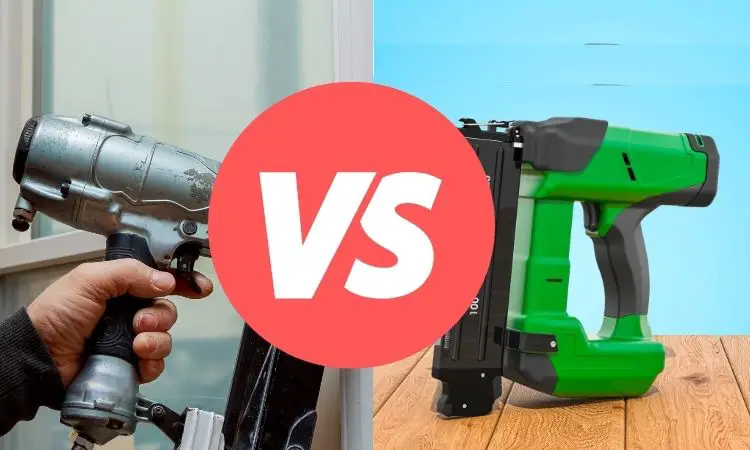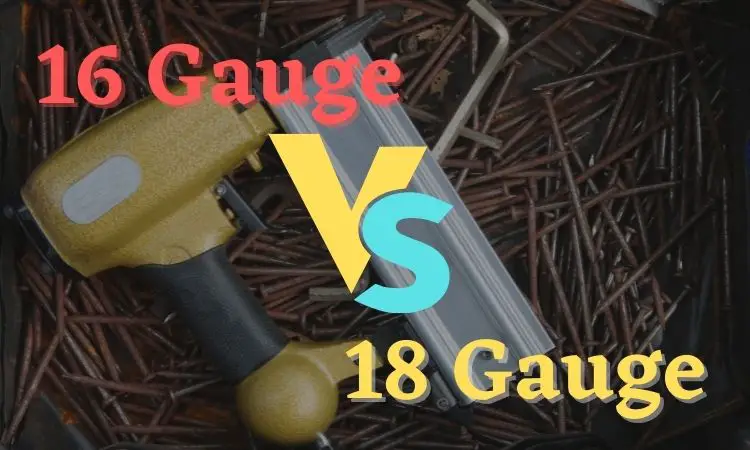A Brad Nailer is perfect for baseboards because it is a smaller, more precise tool. It can drive nails with less force, which is ideal for fragile baseboards. If you're searching for the question of can you use the brad nailer for baseboards.
The Perfect answer “Yes,” You Can Use a brad nailer for the baseboard, To obtain the situation perfectly, you must use the right size brad, especially for the baseboard (1.5 inches to 2.5 inches) and also the right gauge of the brand.
If you are considering using a Brad Nailer for baseboards, be sure to use the appropriate type of nails. Look for nails that have a small head and a thin shank. These nails will be less likely to damage your baseboards or walls.
Read on this article, and we'll get to know if it is worth using a Use Brad Nailer for Baseboards or not. If yes, how can you do that as well as helpful tips and tricks?
Considering Use Brad Nailer for Baseboards?
There are types of baseboards are available in different materials, including wood, plastic, or others. They can also come in a variety of sizes, so it is important to measure your walls before you purchase any baseboards.
Once you have the right material and size, it is time to choose the installation method. There are three main methods: nailing, screwing or using adhesive. Nailing is the easiest and most common method, but it can damage your walls if done incorrectly.
Screwing is a bit more difficult, but it is less likely to damage your walls. If you are using a plastic baseboard, you can use an adhesive for a quick and easy installation.
Once you have chosen the installation method, it is time to decide whether you will be using a hammer or a Brad Nailer. If you plan to install your baseboards on your own, you should use a Brad Nailer.
You can get away with using a Hammer if you have someone to help you lift and secure the baseboard while you nail it in place.
As Crown molding task to baseboards co-relation all types of job must requires the handy and well suited tools for correct formation.
Choose Right Type of Nails
There are different types of nails available depending on your needs and what type of material you will be nailing into. For most types of baseboards, including wood, plastic, or fiberglass, look for nails that have a small head and thin shank that won't damage the material when they are being driven in by the Brad Nailer.
Here is the efficient chart that we perform when working on the baseboard installation:
BRAD NAIL SIZE | 1 Inch | 1.5 Inch | 2 Inch | 2.5 Inch |
|---|---|---|---|---|
Work Efficiency ( Effectiveness) | 90% Fill Counter | 95% Fill Counter | 95% Fill Counter | 99% Fill Counter |
On Work | Copped Joint of Baseboard | Corner Joint | Mitered Joint/ Outside Corner | Shoe Molding |
N.B: "The Measurement isn't Fixed for All sorts of work. It maybe different from baseboard size and Install Mechanism."
Are Baseboards Worth Using a Brad Nailer?
Using a tool like a Brad Nailer will make your baseboard installation much easier. You can avoid damaging your walls, and you'll be able to finish the job faster. If you are doing the installation yourself, it is also much safer than using a Hammer because you won't need to lift heavy panels or risk dropping them on your foot.
By the way, before starting the installation process, you have to be well prepared with all the tools and materials as well as check safety precautions.
Use a Brad Nailer for Baseboards: Tips and Tricks
Before using a tool like a Brad Nailer, make sure you are familiar with how it works. You can use an Air Compressor or Electric Brad Nailer, but whichever method you choose should not affect your decision about whether to use a Hammer or a Brad Nailer for baseboard installation.
It is important to know that there are different nail sizes available. For baseboard installation, look for nails that have a small head and a thin shank. This will reduce any risk of damaging your baseboards or walls when they are being driven in.
Normally, a Brad Nailer is going to be easier and faster than a Hammer, but you can't use it for every task. For larger or heavier jobs, you should use a Hammer instead.
In some cases, such as making sure your baseboards are perfectly perpendicular to the floor, it may even be necessary to use both tools together.
:no_upscale()/cdn.vox-cdn.com/uploads/chorus_asset/file/19586046/baseboard_0.jpg)
Image Source: gogosale
Check Out Our Favorite Pick of: Nail Gun For Hardie Trim
When Working with a Brad Nailer, What Precautions Should You Take?
First and foremost, make sure you wear safety glasses when using any power tool. You should also take care to read the owner's manual that comes with your Brad Nailer. This will ensure that you are familiar with the tool's safety features and how to properly use it.
It is also important to be aware of your surroundings when using a Brad Nailer. Make sure there is nothing in the path of the nails that could be damaged, and avoid shooting nails near people or pets. Finally, always make sure the tool is unplugged when not in use.
In conclusion, baseboards can be installed easily and quickly with a Brad Nailer. You can avoid damaging your walls, and you'll be able to finish the job faster.
By using the right type of nails and following some simple safety precautions, you can ensure a quick, easy, and safe installation.
How to Choose the Right Baseboard Material?
Before you decide what type of baseboard material to choose there are quite a few things that need to be taken into consideration. The material you choose will depend on the decor in your home, the look you are trying to achieve, and which baseboard materials will best suit your living space.
The three different types of baseboards include natural hardwood, laminated wood composite, and plastic or fiberglass.
The most common material used for creating modern-day baseboards is PVC or polyvinyl chloride due to its price in comparison with other options.
All In One Fact OF Use Brad Nailer for Baseboards?
- If your walls are not plumb, level or square, you cannot install the baseboards flat against the wall.
- The same applies if the floor is not level, which it rarely ever is in older homes with uneven floors and joists.
- It all starts at the bottom...You need to start by nailing a 1x4 to the subfloor under each section of the baseboard so that it extends out from the wall at least 3/4". This gives you something solid to nail into.
- You should also use finishing nails instead of brads when installing your trim because they hold better and will prevent "bumps" in your trim work.
- Do not skimp on supplies.
Conclusion:
Baseboards can be easily and quickly installed with a Brad Nailer. You can avoid damaging your walls, and you'll be able to finish the job faster. By using the right type of nails and following some simple safety precautions, you can ensure a quick, easy, and safe installation.
In order to choose the right baseboard material, you should consider the decor in your home, the look you are trying to achieve, and which baseboard materials will suit your living space. Hope this article helps to find your answer.

I am a graduate of Bangladesh Agricultural University, where I delved into various agricultural disciplines, equipping me with a profound understanding of agriculture. Beyond academics, I have hands-on experience in gardening and crop cultivation. My passion is to embrace sustainable farming and horticulture. With a BSc in Agriculture, I am dedicated to promoting environmentally conscious and efficient agrarian practices.
Bachelor of Science (BSc) in Agriculture (Hons.)
Master of Science. (Sustainable Agriculture & Food Security ) (MS)
Bangladesh Agricultural University



![Best Nail Gun for Hardie Trim And Buyer Guide in 2022 [Top Pick] Best Nail Gun for Hardie Trim](https://broadpick.com/wp-content/uploads/2022/02/Best-Nail-Gun-for-Hardie-Trim.jpg)
